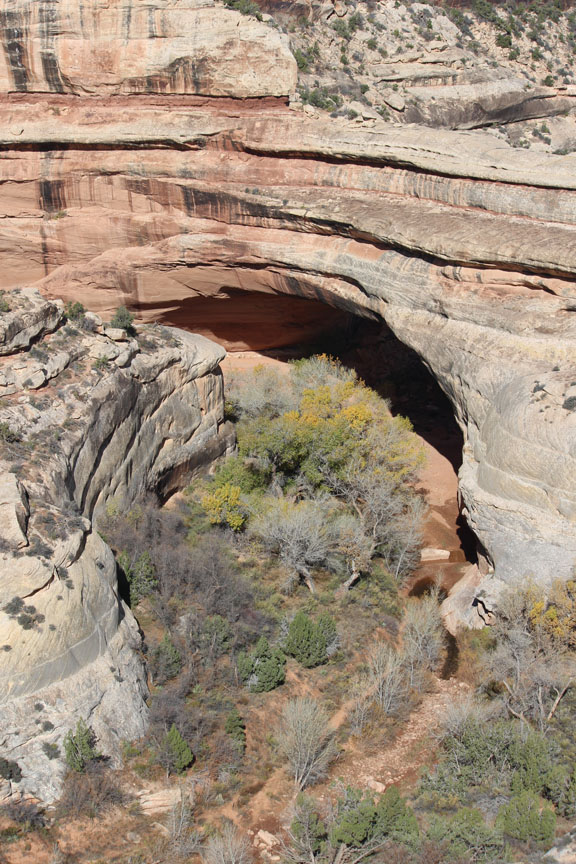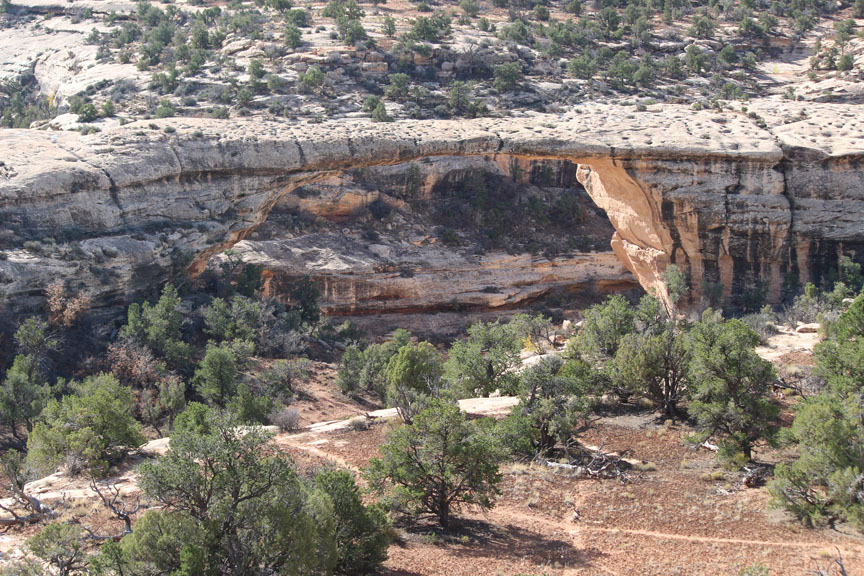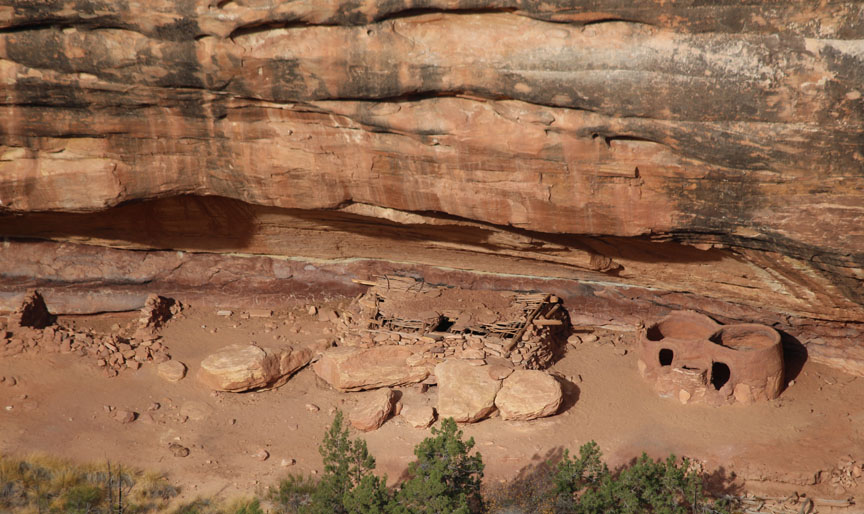Part 12 - Natural Bridges National Monument
On our way from Bluff to the Glen Canyon National Recreation Area, we stopped by Natural Bridges National Monument. Here there are three sizable natural bridges.
You may be wondering what the difference is between a natural bridge and an arch. Some authorities say the terms are interchangeable. The Natural Bridges brochure says that natural bridges are formed by the erosive action of moving water, while arches are formed by other erosional forces.
White Canyon and Armstrong Canyon converge here. Although these canyons may be dry or almost dry much of the time, they are subject to flash flooding, like much of the Utah desert. So water has probably had a hand in forming these three bridges.


Sipapu Bridge is middle-aged, compared to the other two bridges. Of the three, it's the highest and the greatest in span.

Kachina Bridge is the youngest, and is quite bulky. (At another time of day, daylight would show through the bridge where the shadow is in this photo.)

Owachomo Bridge is the oldest, and has been worn thin by frost and seeping moisture. It could fall any day, or it might stand for centuries.



In addition to the bridges, an Ancestral Puebloan ruin is visible (looking steeply down) from Horse Collar Ruin Overlook.